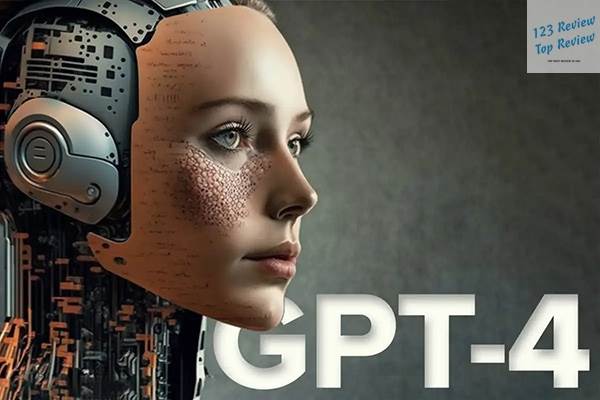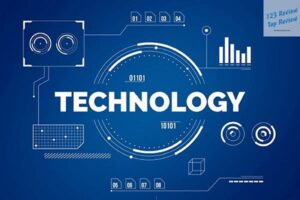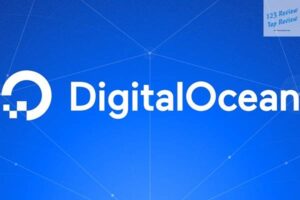GPT-4 model represents a significant leap forward in artificial intelligence, pushing the boundaries of natural language processing (NLP) and understanding. GPT-4 is designed to generate human-like text and handle a variety of language-related tasks, ranging from answering questions and writing essays to summarizing information and providing tutoring. Unlike its predecessors, GPT-4 is not limited to processing just text; it can also understand and generate responses based on image inputs, showcasing its multimodal capabilities. This expanded functionality makes GPT-4 a more versatile tool for users across different domains.
Key Features of GPT-4
Multimodal Capabilities
One of the most groundbreaking features of GPT-4 is its multimodal capabilities. Unlike earlier versions that could only process text, GPT-4 can handle both text and images as inputs. This means that users can provide visual content alongside text, and GPT-4 can analyze and respond based on both forms of input. For instance, if a user inputs an image of a graph or chart along with a question about the data, GPT-4 can interpret the visual information and provide a relevant answer. This capability opens up new possibilities for applications in fields like education, where visual aids are often used to explain complex concepts, or in technical support, where visual context can help in diagnosing problems more effectively.

Advanced Reasoning Abilities
GPT-4 is equipped with advanced reasoning abilities that significantly surpass those of its predecessors. The model is capable of understanding and solving complex problems, providing detailed explanations, and engaging in abstract reasoning. This is partly due to the extensive and diverse dataset it was trained on, which includes a wide range of topics and disciplines. These advanced reasoning abilities make GPT-4 particularly useful in fields that require a deep understanding of context and subtle nuances, such as legal research, academic writing, and technical consulting. Users can rely on GPT-4 not just for straightforward answers but also for insights and analyses that require a higher level of cognitive processing.
Enhanced Instruction Following
Another significant improvement in GPT-4 is its enhanced ability to follow instructions accurately. The model has been fine-tuned to better understand the specific intentions behind user commands, which allows it to execute tasks more effectively. This makes GPT-4 a powerful tool for applications that require precise command execution, such as automated customer support, content creation, and even software development. For example, in programming, GPT-4 can help users write and debug code by following detailed instructions, thereby reducing the time and effort required to complete these tasks.
Performance Benchmarks
MMLU Benchmark Results
GPT-4 has demonstrated remarkable performance on the MMLU (Massive Multitask Language Understanding) benchmark, a test designed to measure a model’s proficiency across a wide range of academic and professional subjects. The MMLU includes tasks from disciplines such as mathematics, history, law, and medicine. GPT-4 has outperformed GPT-3.5 and other models on almost every metric, showcasing its improved ability to understand complex language and deliver accurate responses across diverse topics. This performance indicates that GPT-4 is not only more capable of handling nuanced questions but also better equipped to adapt its knowledge to different contexts and subjects.
Comparison with GPT-3.5
When compared to GPT-3.5, GPT-4 shows significant improvements in multiple areas. It has a larger context window, allowing it to process longer inputs more effectively and maintain coherence over extended conversations. This means that GPT-4 can remember and incorporate more information from earlier in the dialogue, providing more relevant and contextually appropriate responses. Additionally, GPT-4 has a better grasp of idiomatic expressions and colloquial language, making it more adept at understanding and generating natural-sounding text. These enhancements make GPT-4 a more reliable tool for users who need precise and context-aware responses.
Success in Professional Exams
GPT-4’s advanced capabilities have been further validated by its success in various professional exams, including the Uniform Bar Exam and medical licensing tests. The model’s ability to perform well in these high-stakes assessments indicates a deep understanding of complex material and an ability to apply knowledge effectively in specific contexts. This success suggests that GPT-4 could be used as a study aid or even as a tool for professionals who need to stay updated with the latest developments in their fields.
Applications of GPT-4
Creative Writing and Content Creation
GPT-4 has proven to be an invaluable tool for creative writing and content creation. It can generate high-quality, original text based on minimal input, making it a powerful assistant for writers, marketers, and content creators. For example, a novelist could use GPT-4 to brainstorm plot ideas or develop character backstories, while a marketer might leverage the model to draft engaging copy for an advertising campaign. Additionally, GPT-4 can provide feedback on written content, helping creators refine their work and enhance its overall quality.
Programming and Software Development
In the realm of programming and software development, GPT-4 serves as a versatile assistant. It can write code snippets, debug errors, and even generate comprehensive documentation. This makes it a valuable tool for both novice and experienced programmers, who can use GPT-4 to streamline their workflow and reduce the time spent on routine coding tasks. Moreover, GPT-4’s ability to understand programming languages and frameworks allows it to offer context-specific suggestions and solutions, making it an effective tool for software development and maintenance.
Educational Tools and Tutoring
GPT-4’s advanced understanding of language and ability to process multimodal inputs make it an excellent resource for education and tutoring. It can simulate interactive tutoring sessions, provide detailed explanations of complex concepts, and adapt its teaching style to suit individual learners. For example, a student struggling with calculus could use GPT-4 to get step-by-step guidance on solving differential equations, while another learner might use the model to explore historical events in depth. This adaptability makes GPT-4 a versatile tool for educators and learners alike, offering personalized support that can enhance the learning experience.
Technical Specifications
Model Architecture
GPT-4 is built on a transformer architecture, which is a type of deep learning model specifically designed for natural language processing tasks. The transformer model uses self-attention mechanisms to understand the relationships between words in a sentence, allowing GPT-4 to generate coherent and contextually relevant text. This architecture enables the model to process large amounts of data efficiently and generate high-quality outputs that are both accurate and context-aware.
Context Window Size
One of the technical advancements in GPT-4 is its increased context window size, which allows the model to consider longer portions of text input when generating responses. This enhancement enables GPT-4 to maintain context over more extended conversations and understand complex queries more effectively. The larger context window is particularly useful in applications where maintaining continuity and coherence is crucial, such as customer support, interactive storytelling, and educational tutoring.
Input and Output Formats
GPT-4 supports a wide range of input and output formats, including text, images, and code. This versatility allows users to interact with the model in various ways, making it suitable for a broad spectrum of applications. For example, a user could input a question along with an image of a scientific diagram, and GPT-4 would be able to analyze the diagram and provide a relevant answer. Similarly, developers can input code snippets and receive suggestions or debugging assistance, making GPT-4 a flexible tool for both creative and technical tasks.
Improvements Over Previous Models
Lessons Learned from Adversarial Testing
GPT-4 has undergone extensive adversarial testing to identify potential weaknesses and areas for improvement. This testing involves exposing the model to challenging or misleading prompts to see how it responds and where it might fail. Based on the insights gained from this process, OpenAI has implemented several enhancements to make GPT-4 more robust against adversarial attacks. As a result, the model is better equipped to handle ambiguous or misleading prompts and less likely to produce erroneous or harmful outputs.
Factuality and Alignment Enhancements
To improve factual accuracy and alignment with human values, GPT-4 has been fine-tuned using a diverse set of data sources and techniques. The model’s responses are regularly evaluated for truthfulness, reliability, and alignment with ethical guidelines. These efforts have resulted in a model that is more accurate and trustworthy, reducing the likelihood of producing misleading or harmful content. This focus on factuality and alignment makes GPT-4 a more reliable tool for applications that require a high degree of accuracy, such as academic research, legal analysis, and medical consultation.
Handling of Nuanced Instructions
GPT-4’s ability to handle nuanced instructions has been significantly improved compared to previous models. It can better understand and respond to complex or subtly worded requests, making it a more effective tool for users who need precise and context-aware outputs. For example, a user might ask GPT-4 to generate a summary of a legal document while highlighting specific clauses that pertain to a particular issue. GPT-4’s improved instruction-following capabilities enable it to execute such tasks with greater accuracy and relevance.
Potential Use Cases
Business Applications
GPT-4 offers numerous applications in the business world. Companies can use the model for customer support, where it can handle routine inquiries and provide assistance around the clock. In marketing, GPT-4 can generate personalized content for email campaigns, social media posts, and advertising copy, helping businesses engage with their audiences more effectively. Additionally, GPT-4 can assist in data analysis and reporting, providing insights and recommendations based on large datasets, which can help companies make more informed decisions.
Scientific Research Applications
In scientific research, GPT-4 can be a valuable tool for data analysis, literature reviews, and hypothesis generation. Researchers can use the model to analyze large volumes of data and identify patterns that might not be immediately apparent. GPT-4’s ability to generate human-like text also makes it useful for drafting research papers, summarizing findings, and generating ideas for future studies. This versatility makes GPT-4 a powerful ally for scientists and researchers looking to accelerate their work and explore new frontiers.
Healthcare and Medicine
GPT-4’s advanced reasoning abilities and vast knowledge base make it a promising tool for healthcare and medicine. The model can assist doctors and medical professionals by providing up-to-date information on medical conditions, treatments, and drugs. It can also help in drafting medical reports, summarizing patient histories, and even providing second opinions on diagnoses. While GPT-4 is not a replacement for professional medical advice, it can serve as a valuable support tool for healthcare providers, helping them deliver better care to their patients.
Ethical Considerations
Mitigating Bias and Misinformation
As with any AI model, there are ethical considerations to keep in mind when using GPT-4. OpenAI has taken steps to mitigate bias and misinformation in the model’s outputs, but it is still possible for GPT-4 to produce biased or inaccurate content. Users should be aware of these limitations and use the model responsibly, ensuring that the information it provides is verified and accurate. Additionally, OpenAI continues to work on improving the model’s ability to recognize and avoid biased or harmful outputs, making GPT-4 a safer and more reliable tool for users.
Responsible Usage Guidelines
OpenAI has established guidelines for the responsible use of GPT-4 to ensure that the model is used ethically and in ways that align with human values. These guidelines include recommendations for avoiding harmful applications, protecting user privacy, and ensuring transparency in AI usage. By following these guidelines, users can help ensure that GPT-4 is used in ways that benefit society and minimize potential risks.
Conclusion
GPT-4 represents a significant advancement in AI and natural language processing, offering a range of new capabilities and improvements over previous models. With its multimodal abilities, advanced reasoning skills, and enhanced instruction-following capabilities, GPT-4 is a versatile tool that can be applied in various domains, from creative writing and content creation to programming and scientific research. However, it is important to use GPT-4 responsibly, keeping in mind its limitations and the ethical considerations associated with AI technology. As AI continues to evolve, models like GPT-4 will play an increasingly important role in shaping the future of human-computer interaction, offering new opportunities and challenges for users around the world.





